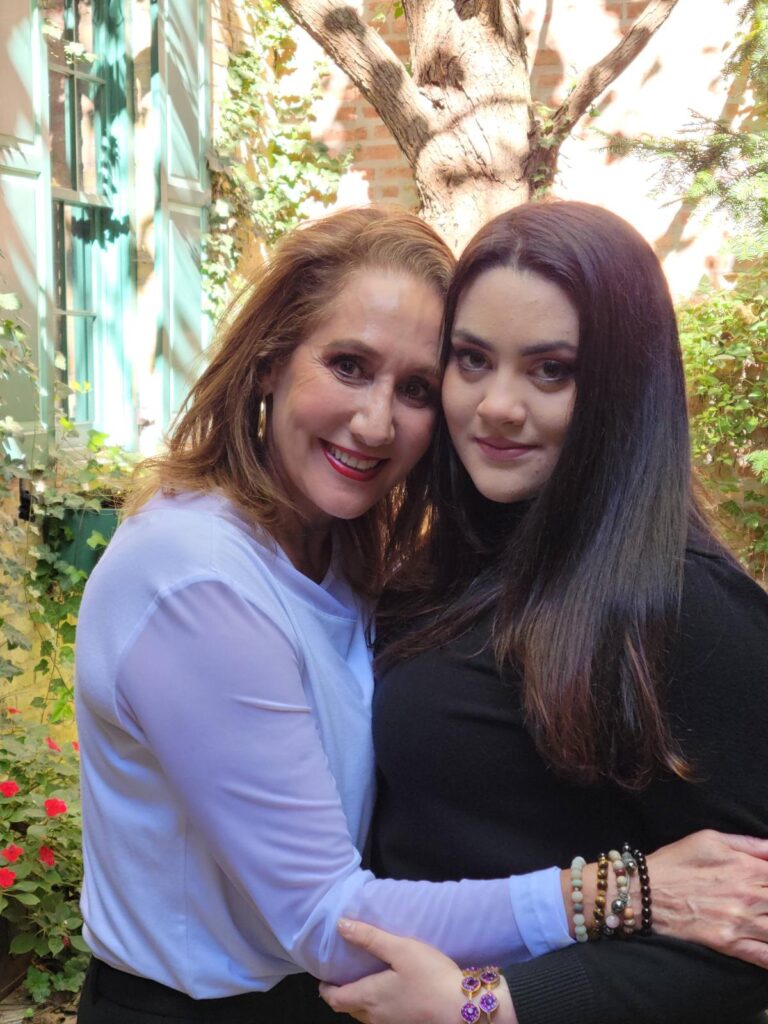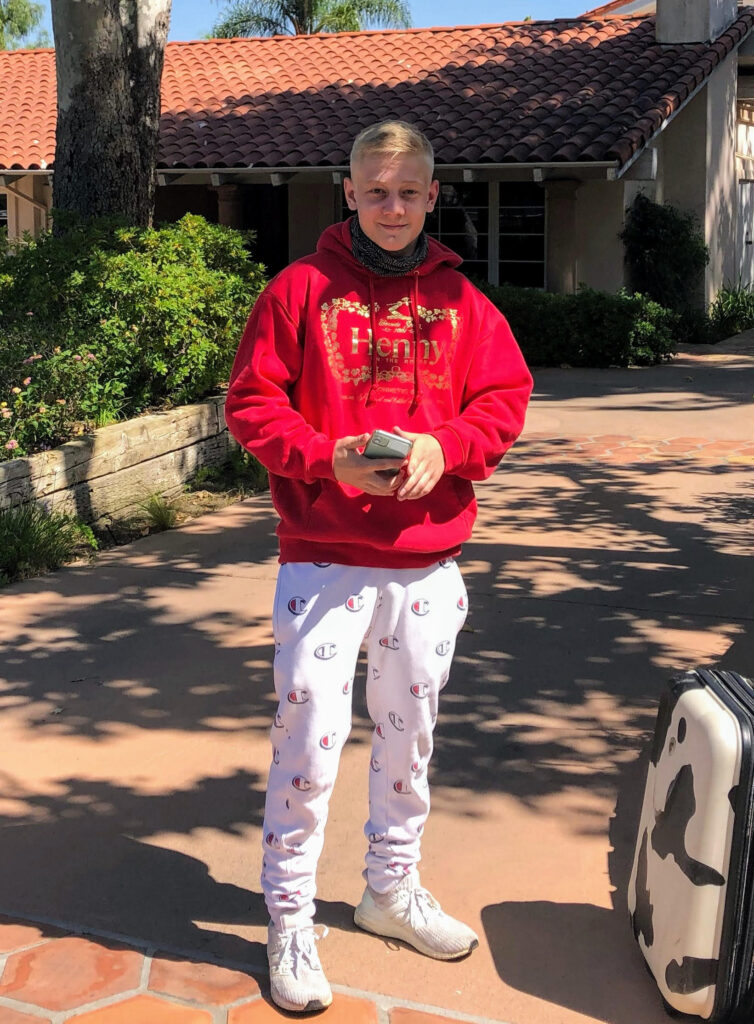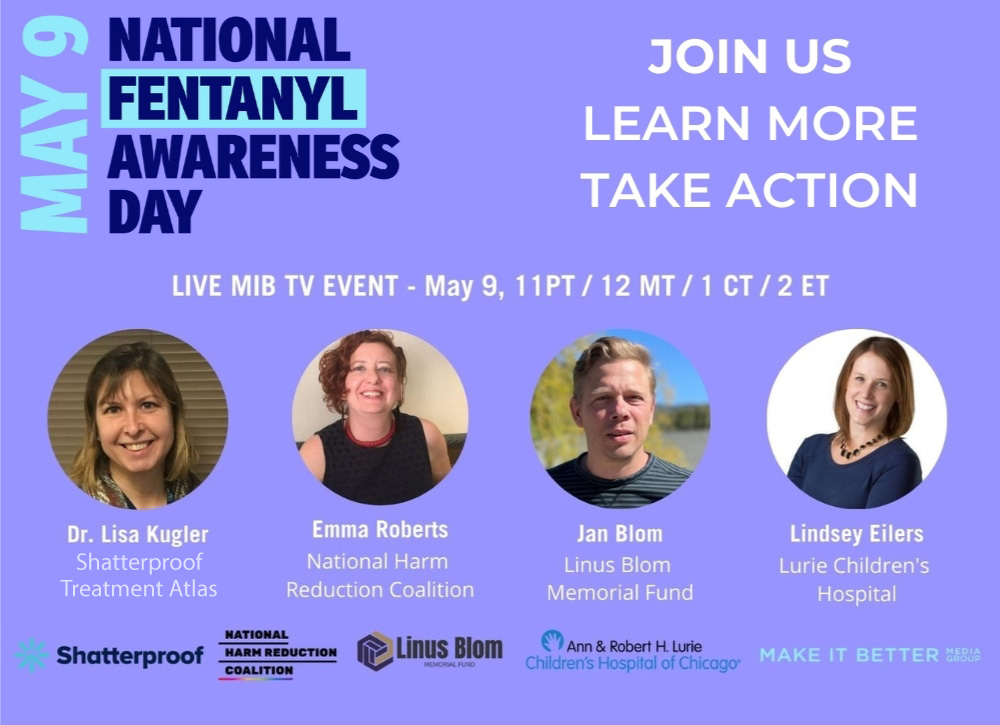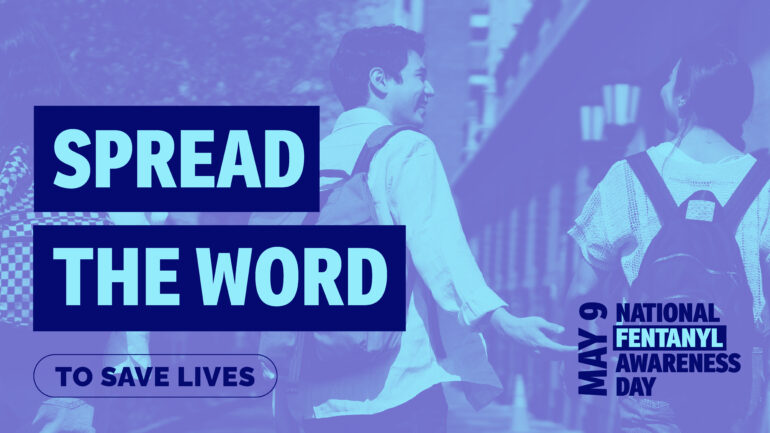Fentanyl has been called the single deadliest drug threat our nation has ever encountered. It is, according to the Center for Disease Control and Prevention (CDC), 50 to 100 times more potent than morphine.
The numbers are staggering. In 2021, 107,375 Americans died of drug overdose and poisoning, with 67% of those deaths involving synthetic opioids like fentanyl.
“Tragically, fentanyl fatally poisons one person in America every 8.57 minutes, killing 175 people every single day,” said U.S. Congressman Gregory Murphy of North Carolina, who is also a practicing physician.
No community is safe. Fentanyl is found in illicit drugs like cocaine, methamphetamine and heroin. It is also found in pills sold on the street, made to look much like Xanax, Percocet or oxycodone. It is found in marijuana, too. Dealers also sell “rainbow fentanyl” in bright colors resembling candy. Only two milligrams of fentanyl is considered a lethal amount.
Communities throughout the United States are reeling daily from the deaths of people who had one thing in common: these are accidental deaths, none of the deceased intended or wanted to die.
The victims include stellar students who took what they thought was Adderall to pull an all-nighter before a test, or students looking for a pill to sleep. They are star athletes powering through the pain who thought they took Percocet. They are our children, struggling with anxiety and depression, trying to quiet the negative voices in their heads. Others have struggled with addiction, and many who have completed rehabilitation relapse and take one pill — a pill laced with a trace of fentanyl.
“It is the leading cause of overdose deaths in the United States,” said Laura Parise, Medical Director of NorthShore University HealthSystem’s Doreen E. Chapman Center, a substance abuse treatment center. “One pill will kill,” Parise said.
Fentanyl overdose is now the leading cause of death for those ages 18-45, overshadowing car accidents and suicides, said Dr. Lisa Kugler, psychiatrist and Senior Vice President at Shatterproof, an addiction platform.
“Shockingly, 40% of the counterfeit pills tested by the [US Drug Enforcement Administration] contained potentially lethal doses of fentanyl,” Kugler said. “Children, teens and college students think they are buying a pill and find out they are taking potentially very high doses of fentanyl. Fentanyl is incredibly lethal, it is so potent,” Kugler said. “It is often times sold by kilogram. A kilogram is enough to kill 500,000 people.”
Today’s youth are more anxious than ever before. With school and mass shootings so prevalent and having weathered a pandemic that left them isolated and confused, more youth are turning to drugs, Kugler said. Other risk factors include mental health issues, adverse childhood experiences and trauma. Everyone is affected.
Honoring Victims By Sharing Their Stories to Prevent More Deaths
Callen Griffin
Callen Griffin was a vibrant 21-year-old from Chicago. Known for her generosity of spirit she always stopped to help others. She had an amazing singing voice and tons of friends.

But Griffin also struggled with depression and borderline personality disorder. She turned to drugs to “quiet the noises in her head” her mother, Leslie Fox, said. She worked hard on her addiction issues in rehab and was doing well. That changed last September, when Griffin died after smoking marijuana laced with three kinds of street fentanyl, her mother said.
Her mother, who — along with Griffin’s dad and three brothers — spoke at her funeral said, “I had to honor her story and there was no shame involved. And there is a lot of shame with mental illness and drug abuse,” Fox said.
Linus Blom
Linus Blom, 17, of Los Gatos, California, was an excellent student and high school wrestler. He struggled with the pressure to do well in Silicon Valley and turned to drugs as a result. He went to rehab but relapsed quickly, said his father Jan Blom. Though the family was working on other rehabilitation options, in July 2020, Linus died after taking a Percocet laced with fentanyl.

Jan Blom now works to raise awareness about the dangers of fentanyl. He talks to young people about their experiences and shares his son’s story. He warns parents about the dangers of social media, too, given that his son found drugs via Snapchat.
“Linus had so much promise as a wrestler and did go to rehab for one month,” Jan Blom said. “In hindsight, he should have stayed longer.”
Blom said there are not enough treatment options available. He was notified in September, months after Linus died, that a facility had a room for him.
Matthew Loudon
Matthew Loudon of Olney, Maryland, had struggled with anxiety and depression starting at age 16. He became addicted to Xanax but overcame that. Then, in October 2020, he had a dirt bike accident that caused a lacerated liver. His treatment included a fentanyl patch. Later, friends brought him illegal drugs. On November 3, 2020, Matthew, 21, died in his home after taking a Percocet that had been laced with fentanyl.

Deena Louden, Matthew’s mother, became involved in educating others with hopes of preventing more accidental overdoses. She now works with Shatterproof, speaking to high school groups, and insists on being brutally honest.
“I share my experience of a mother losing their child,” Louden said. “I tell them I walked downstairs and found my son dead on the floor.”
Louden said it is important for adults to educate themselves, stay vigilant and keep the lines of communication open.
Charlie Ternan
Ed and Mary Ternan started Song for Charlie, a national family-run nonprofit charity dedicated to raising awareness about ‘fentapills’ — fake pills made of fentanyl.
“We were thrown into this issue against our will,” Ed Ternan said.
His son Charlie, 22, an economics major at Santa Clara University, died unexpectedly in 2020 after taking a counterfeit Percocet for back pain after back surgery. He talked to a fraternity brother who purchased six Xanax and one Percocet. He died from a fentanyl-laced Percocet.
“Charlie represents this new category of victim,” Ternan said. “There were no warning signs, no depression, no drug use or mental illness.”
The Ternans realized that although law enforcement recognized the scope of this ever-growing explosion of fentanyl-tainted drugs, kids were not getting the message. They were obsessed with the question of “Who is telling the kids?” Hence, Song for Charlie was born.
“We try and take the message to the most vulnerable — to young people, teens and 20-somethings,” Ternan said. “The deaths are from lack of information.”
What Every Parent Should Have at Home
According to Dr. Parise, every family with children potentially at risk should have Narcan on hand. The nasal spray is easily available through government agencies and local pharmacies. “It reverses the effect of an opioid overdose, you could save someone‘s life,” Dr. Parise added.
It is important to have Narcan easily accessible so you can access it quickly in a stressful situation. Dr. Parise did stress that if you use Narcan, it is important to also call for emergency help as the effect is short acting and sometimes Narcan requires more than one dose.
View this post on Instagram
What Else Can Parents Do?
Too many parents have experienced the heartbreaking loss of a child to fentanyl. Many of them are now committed to spreading awareness — honoring the memory of their own child by fighting to save the lives of others. Learn from the painful stories shared by other parents and join Better for an upcoming virtual event, Fighting Fentanyl: Advice from Grieving Parents and Healthcare Experts on What Parents Need to Know and How to Help. And take note of these important pieces of advice from the experts:
- Open up lines of communication — be aware of peers and peer pressure.
- Recognize issues around mental health and seek professional help if needed.
- Be aware of social media apps your children are using. If children are using Snapchat or Instagram put it on your phone, too, so you can be aware of how the apps work and be hypervigilant.
- Raise awareness around fentanyl for yourself and children age middle school and above.
- Look for changes in your child’s personality, abrupt change in friends, irritability, isolation, difficulty sleeping and more.
- Be a role model for your children.
- Take early substance abuse seriously — even if you think you can trust your child, stress the potential dangers.
- Be gentle with yourself and recognize there are no perfect parents.
- Have Narcan in your house in a place easily accessible in a stressful situation. Narcan nasal spray is available without a prescription at government agencies and community pharmacies.
Learn more and take action:
Please join us on May 9, National Fentanyl Awareness Day, for a special virtual event hosted by Better: Fighting Fentanyl: Advice from Grieving Parents and Healthcare Experts on What Parents Need to Know and How to Help. In recognition of National Fentanyl Awareness Day, our panel of healthcare experts, grieving parents and nonprofits share expert advice on what parents need to know and how to help by supporting organizations committed to preventing tragedy at the hands of fentanyl.

One Pill Can Kill:
Join a community conversation about the dangers of fentanyl at Am Shalom in Glencoe on Tuesday, May 2 at 7pm or via Zoom.
Am Shalom, 840 Vernon Avenue, Glencoe
Register online at amshalom.com/event/onepill.

How to Help:
Take action by donating to the Make It Better Foundation and your funds will be matched up to $25,000 by the Linus Blom Memorial Fund and the Make It Better Foundation and distributed to our National Fentanyl Awareness Day partners: Shatterproof, National Harm Reduction Coalition and Song for Charlie. Designate the recipient(s) on the donation page when you click to donate.

More from Better:
- National Fentanyl Awareness Day: A Lament and Request For Help On Behalf Of Charlie, Linus and Too Many Other Lost Children
- Reach For a Loved One Before They Reach for a Drug — A Mother’s Plea and Advice After Losing Her Son to Fentanyl
- 2023 Philanthropy Award Winners: 3 Organizations Making the Greatest Impact in Violence Interruption and Prevention in Chicago

Susan Berger is a freelance journalist in Chicago and has written for the Washington Post, New York Times and Chicago Tribune. She was a 2021 CDC Fellow through the Association of Health Journalists, a National Press Foundation Fellow in 2019 to study vaccines and dementia. She also has written for Health Magazine, National Post, Agence France-Presse, and CBC and Better Magazine. Ms. Berger has appeared on the Today Show, NBC Nightly News, BBC World News, CNN, WGN-TV, WTTW-TV and on CBC Radio. Her work can be viewed at www.bergerreport.com and you can follow her on Twitter @Msjournalist

